How Can I Really Help the Poor?
You want to donate and get involved in meaningful ways but you don’t know which are the best charitable organizations or where to find volunteer opportunities. You want to give to the poor, but you want to make sure your money is going to right places. You want to make a real impact in the world, and in people’s lives, but you’re paralyzed wondering, “Where in the world do I start?”
If that sounds like you, you’re in the right place. This article addresses all of those questions—A Beginner’s Guide to Caring for the Poor.
As Elder Holland recently declared and promised, “I don’t know exactly how each of you should fulfill your obligation… But I know that God knows, and He will help you and guide you in compassionate acts of discipleship if you are conscientiously wanting and praying and looking for ways to keep a commandment He has given us again and again.”
This guide is designed to help you start walking so God can direct your path. It is meant to be followed prayerfully and with instruction from the Spirit.
So let’s get started with 3 simple steps to “do what we can.”
- Make the Choice to Be Charitable
- Determine What You Have to Offer
- Decide How Much to Put on the Altar
- Find Where You Can Do the Most Good
- Make a Difference with Time, Talents and Possessions
- Make a Mark with Money
- Mobilize Your Good Intentions
- Put Your Heart Where Your Money Is
- Overcome Panhandling Guilt
- Conquer Giving Paralysis
Step 1: Make the Choice to Be Charitable
The group Kiva Mormons began in 2008 when Jeremy Foote decided he wanted to make an impact with his money and invite other members of the Church to do the same. In an interview with Brother Foote he said, “Charitable giving is for us that are in Western nations one of the great obligations and one of the great testing places where we really have to choose how to live the gospel…
[pull_quote_center]”Figuring out what to do with our money is a real opportunity and test of discipleship.”[/pull_quote_center]
And yet, giving is not something that happens by accident. With few exceptions, we do not give unless we intentionally decide to give. So make the choice, and only make it once. As you recommit to obey this commandment, your desire to give will fill your heart and overflow into your actions.
But if this is going to happen, we need to place caring for the poor firmly in our schedules and our budgets and never look back.
To make this commitment, you need to
Determine What You Have to Offer

To determine what to give, Brother Foote suggests, “Look for the blessings you have and see how they can be applied to the people who would benefit most.”
So the first step is to examine the things with which the Lord has blessed you that can be used to bless others. Do you have special talents or training? Do you have discretionary time? Do you have money you could sacrifice?
Start by making a list of your blessings of time, talents and means. Get creative and be specific and you will feel God guiding you. When you realize how much you have to offer, God will help you know what to put on the altar.
Your list may look something like this:
- Time: Tuesdays/Thursdays 10am-1pm, Saturday (as a family) 11am-2pm
- Talents: Singing, Painting, Listening, Organization, Parenting
- Professional Training: Math Tutoring, Accounting, Job Applications/Interviews
- Means: Enough and more. We could sacrifice at least $50/month.
- Possessions: Shoes, Coats, Food Storage
Take time to prayerfully decide what God would have you offer to bless His children.
Decide How Much to Put on the Altar
You’ve decided what to give, but how much of it should you give?
While tithing is an explicit rule and it’s easy to know if you’re living that law, when asked, “Are you living the law of consecration?” it is not a simple yes or no.
C.S. Lewis gives us some direction regarding the appropriate size of our charitable offerings. He says, [quote_box_center]”I do not believe one can settle how much we ought to give. I am afraid the only safe rule is to give more than we can spare…[I]f our expenditure on comforts, luxuries, amusements, etc., is up to the standard common among those with the same income as our own, we are probably giving away too little.
If our charities do not at all pinch or hamper us, I should say they are too small. There ought to be things we should like to do and cannot do because our charitable expenditure excludes them.[/quote_box_center]
Obviously, this must be a matter of prayer, and of sacrifice. Ask God how much He would have you give, and once you feel His answer, commit to it! Put it in your schedule and in your budget. Make the decision once so you don’t have to keep deciding.
Brother Foote explains the benefit of doing this. He says, “It helps you psychologically to be more generous to know there is a store of money that can be used for charitable giving.” For him, this budget also includes items purchased for the Scouts or meals brought to other families, so it is easy to be generous in his day to day charitable living as well as in specific donations.
He and his wife set aside a percentage of their income for charitable giving, just as they do for tithing and savings. He says, “This way, whether it is a fat year or a lean year, our giving doesn’t change.”
Jon Huntsman, Sr. models another approach—setting aside a specific amount each month. While it may seem easy to give when you are a billionaire, his generosity began long ago. He says, [quote_box_center]”When my wife and I made only $300 a month as a naval officer right out of college and I had debts to pay, we always gave $50 a month away to charity in addition to our tithing. And it was just something that in my heart I’ve always believed that if you are generous and help others, you’ll be blessed in your own life.”[/quote_box_center]
He has been, and you will be too as you firmly commit to give.
Step 2: Find Where You Can Do the Most Good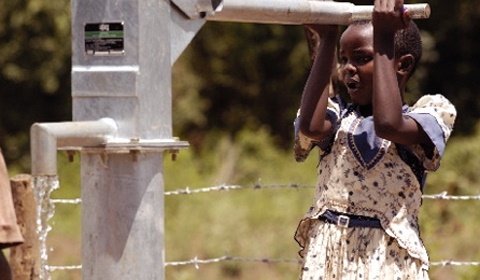
With a determination of what and how much to give, now you need to know where to give it.
There is no one right way to give, so this will look different for everyone. Think about your giving philosophy and use that to guide you to your giving niche. As you get into the realm of charitable giving, questions will surface in your mind such as:
- Are physical needs such as food, clean water, shelter and protection from disease where I want to focus?
- Are barriers to livelihood what I want to address, such as surgeries, glasses, and wheelchairs?
- Do I want to be involved in teaching people skills, such as newborn resuscitation, jewelry making, or farming?
- Do I believe in giving directly to the people, or do I prefer working alongside them?
- Are short-term solutions a necessary first step to long-term self sufficiency?
Don’t wait until you have all the answers before you start giving. As Brother Foote says, “Finding the right charity is way down the line….Giving is a good thing; you really can’t go wrong.” Now is the time to get in the habit of giving. So just jump in.
Look at what you have to offer and ask, “Who can most benefit from those things?”
Determine how to
Then
Make a Difference with Time, Talents and Possessions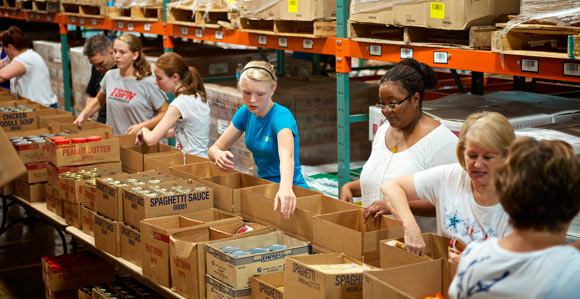
Most of us with time and talents to offer are looking for local opportunities. And there is no shortage of opportunities! But, don’t get overwhelmed! It’s important to consider the possibilities to find something that fits with your time and interests, and God’s plan for you. But you don’t have to be involved in every good cause; if an idea doesn’t jump out at you, move on.
Here are 5 suggestions to make a mark with your time, talents, training and possessions.
1. Volunteer with Church organizations
Brother Foote says, “The Church is a great place to start. There are a lot of very good giving opportunities…. For members of the Church, it seems like that is the place to start.”
Depending on your location, there are many local opportunities where you can volunteer your time and talents. Such as:
- Bishop’s Storehouse
- Deseret Industries
- LDS Employment Services
- Church cannery, ranch or farm
- Helping Hands after natural disasters
- Clothing and other donations to Deseret Industries
2. Visit justserve.org to discover the volunteer opportunities in your area
The Church recently launched this tool in some areas to help members partner with local charities to meet local needs and build bridges in communities.
Use this Justserve to find volunteer opportunities, and get the Church involved in the community. Consider organizing a volunteer group for Family Home Evening, Youth Activities, Relief Society Meetings, Date Nights, and Ward Parties.
Some of my most memorable youth activities and family home evenings were spent serving dinner in soup kitchens, building Habitat For Humanity homes, repainting homeless shelters, and recording books on tapes for an inner city school.
3. Find organizations that address basic needs
Get to know the organizations in your community dedicated to feeding, clothing and sheltering those in need. The best way to do this is to find your local:
- homeless shelter
- soup kitchen
- food bank
- Habitat for Humanity chapter
- Goodwill or Salvation Army for clothing and household donations
Then get involved by volunteering and donating.
4. Consider the educational and life skill needs, especially of those transitioning from homelessness
Many inequities cannot be solved with any amount of money, but there are other ways to meet those needs. Brother Foote says, [quote_box_center]”Money can address the most obvious roots of inequality: health, clean drinking water, food. But it’s harder to see how money can change those spiritual and psychological things that are based on culture, norms, and legislation.
The more systemic problems will only be fixed by people changing their attitudes.” [/quote_box_center]
Here are some of the ways Justgive.org suggests to help raise people to a higher standard of living:
- Volunteer your professional services and hobbies – Offer skills training or career advisement; provide medical, dental and counseling help; or address legal concerns.
- Volunteer with follow-up programs – Teach fundamental tasks such as cooking, cleaning, paying bills, and balancing a budget.
- Tutor and Mentor at-risk children – Provide positive adult attention and academic tutoring. Shelters, transitional housing programs and schools often run such tutoring programs, or would be happy to start one!
- Take homeless children on trips – Participate in trips run by local shelters to visit aquariums, sporting events or other activities and give homeless children a view of life outside the streets and shelters.
- Play with children in a shelter – Bring your children and some toys or coloring books and spend an afternoon allowing homeless children some interaction with others their age.
- Employ the unemployable – If you are in a position to do so, consider offering on-the-job training to help the “unemployable” transition to permanent work.
5. Focus on long-term changes that can be made in your city
Prevention is always more effective than treatment, and that is true in the cases of homelessness and poverty.
Givewell.org offers more great ideas to make lasting changes. Although focused largely on homelessness, these ideas can easily be expanded to include others in poverty.
- Teach about the homeless and shelters- Talk about your volunteer work. Contact newspaper editors to publish information about shelters and volunteer needs.
- Educate your children about the homeless – “Help your children to see the homeless as people.” Volunteer as a family. Allow your children the opportunity to choose toys or clothes to donate.
- Recruit local business – Organize food or clothing drives and ask local grocery or clothing stores to publicize and put donation containers in their stores.
- Write to corporations – “Some of the largest corporations in America have joined the battle for low-income housing… they are participating with federal and state government, not-for-profit and community-based groups to build desperately needed housing.” Contact them and invite them to get involved!
- Contact your government representatives – Research low-income housing, transitional housing, and homelessness prevention programs in your area. Find out if yours is one of the many states that rejects children from school enrollment and excludes adults from voting without a permanent address.
The National Law Center on Homelessness and Poverty offers information on current issues and pending legislation.
Whatever your talents and skills, there is a great need for them in others’ lives!
Make a Mark with Money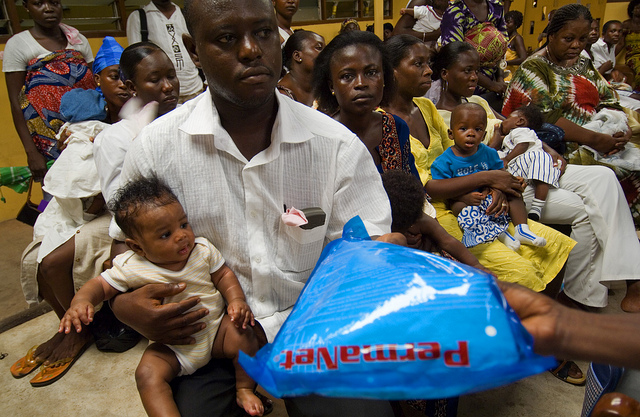
If you have money to give, most experts recommend donating it globally where it can have the greatest impact.
Here are 4 avenues to consider.
1. Donate to LDS Charities
Elder Holland counseled, [quote_box_center]”[A]ll who are physically able are to observe the law of the fast…be as generous as circumstances permit in your fast offering and other humanitarian, educational, and missionary contributions.”[/quote_box_center]
To help members of the Church and others with physical needs and educational endeavors, donate to
- fast offerings
- the Humanitarian Fund
- the Perpetual Education Fund
To address spiritual needs, donate to
- the Missionary Fund
- the Temple Patron Fund.
2. Make the greatest impact per dollar
Greatest impact giving focuses on people whose lives will change most drastically by your donations. Often charities with this mentality use simple, inexpensive means to prevent disease and meet other basic health needs.
For example, a pill or net can save a life and fortified salt can reverse cognitive decline.
If you want every dollar to have the greatest possible impact, visit Givewell.org’s top charities list. This site extensively researches and analyzes true impact of donations and gives suggestions of the best charities to donate to.
3. Donate to a specific sector
Specific sector donations can focus on a blessing or interest that makes others’ lives richer. For example, Vision Spring offers affordable eyeglasses giving the gift of sight and the ability to work.
This type of focused giving can also center on a specific idea, such as ways to solve world hunger. For example, One Acre Fund believes farmers are the key to ending hunger and poverty, so they focus on making farmland more productive.
Visit Charity Navigator to find the best charity focused on specific needs or ideas. This site offers an extensive report for each rated charity and allows you to compare them.
4. Donate straight to the poor through GiveDirectly
If you want to know that the greatest percentage of money is actually going to the cause and that the cause is actually making an impact, GiveDirectly is a perfect place to start.
This is a charity that makes cash transfers directly to the extreme poor for basic life necessities. Your money will reach people who truly need it.
Money is an incredible tool that can do a profound amount of good when given wisely.
Mobilize Your Good Intentions
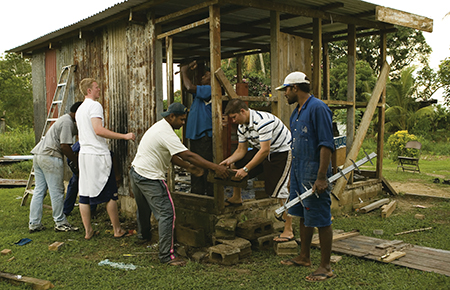
Despite the warning, you’re probably feeling overwhelmed by all of the wonderful giving and volunteering options. Not to mention, you likely feel that your schedule is already too full and your budget is already too tight. So, take a step back and think about how charitable giving can fit into what you are already doing.
If you volunteer at your kids’ school, consider volunteering at the high risk school across town instead. If you have a budget for restaurants and entertainment, consider moving a percentage of that money to your charitable giving budget.
If nothing—or everything—jumped out at you, pull your list back out from step 2 and let’s break it down. With each blessing, ask “how can this be applied to the people who would benefit most?”
Think outside the box and write everything that comes to mind, giving God a chance to guide you down a path you may have never considered.
Your list may now look like this:
- Time:
- Tuesdays/Thursdays 10am-1pm→ Inner city school, Salvation Army, Bishop’s Storehouse
- Saturday (as a family) 11am-2pm→ Food bank, Soup kitchen, Bishop’s Storehouse, Write to Congressman
- Talents:
- Singing→ Holiday program at a shelter, Lessons for at-risk teens
- Painting→ Teach classes at Battered Women’s Shelter
- Listening→ Counseling/educational advisement for at-risk teens and adults
- Organization→ Teach home organization skills/scheduling at Transition Program
- Parenting→Women’s Shelter, Homeless Transition Program
- Professional Training:
- Math Tutoring→ After school programs, summer school, homeless shelters
- Accounting→ Board of Non-profit organization
- Job Applications/Interviews→ Homeless Shelters, Government Workforce Service, LDS Employment Services, Teach seminars at local library
- Means:
- Enough and more→ More generous fast offering, Save for Humanitarian Mission
- We could sacrifice at least $50/month.→ Missionary Fund, Givewell,
- Possessions:
- Coats→ Winter Coat Drive
- Food Storage→ Food bank
Step 3: Put Your Heart Where Your Money Is
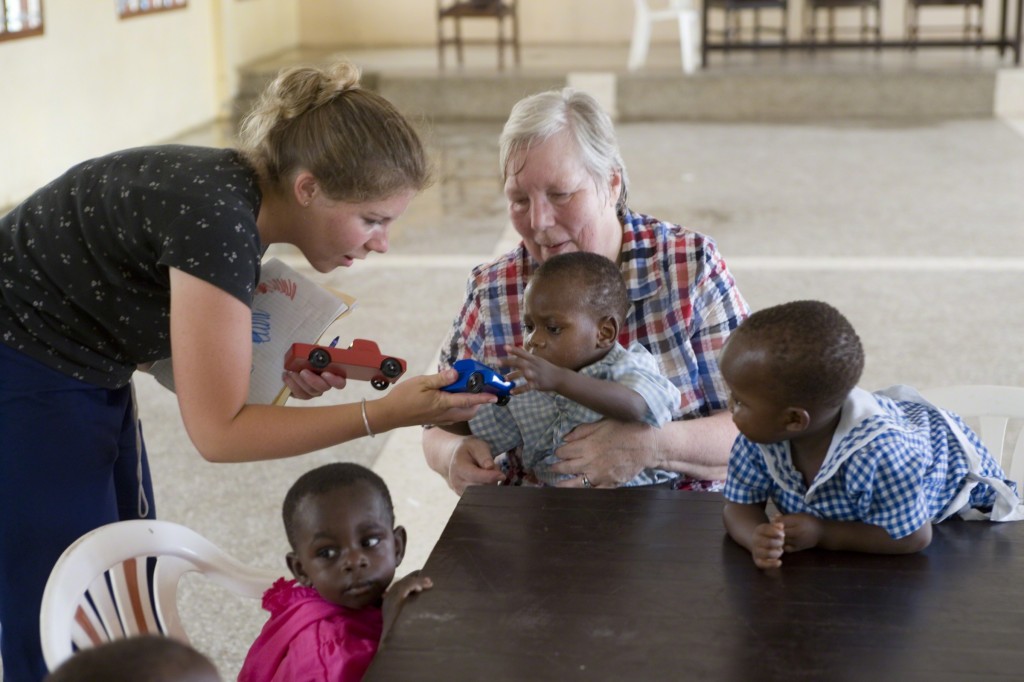
Along with your commitment to give, this is a good opportunity to check your heart. Here are three simple suggestions to ensure your Christ-like hands are moved by a Christ-like heart.
- Love those you serve. Look into their eyes and see them as the children of God that they are.
- Learn from them. Do not view yourself as a superior benefactor but as an equal, struggling mortal. Recognize that your life is just as unfair as theirs; you’re just on the other side of fairness.
- Pray for them, sincerely. Prayer is a principle of action and power. God will guide your actions and give you the power to carry out His plans.
When you have a loving heart, you will give with pure motives. [pull_quote_center]You won’t give to ease your conscience, but to ease their suffering.[/pull_quote_center]
But even the purest giving heart can be stirred up and confused. Let’s address two of the main setbacks.
Overcome Panhandling Guilt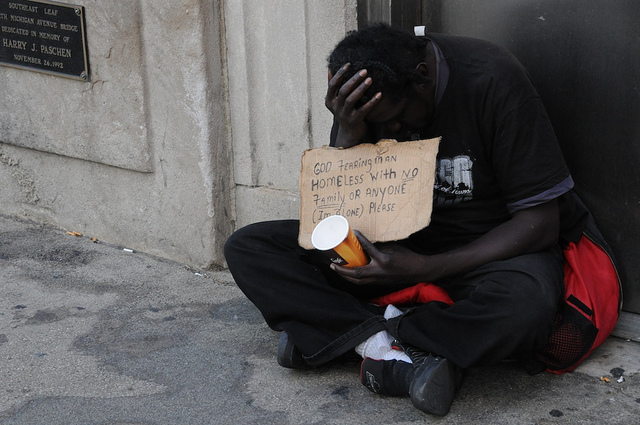
For most of us, encounters with panhandlers are the most frequent face-to-face interactions we have with the poor. Thus, this is often the image that comes to mind when reminded of our charitable obligation. Yet, it is generally accompanied by mixed emotions for various reasons.
We may feel that we have two options: always give to panhandlers or harden our hearts and even pretend we don’t see them. Neither of these feel right but as a result, as BrotherFoote explains, [pull_quote_center]”People feel like they shouldn’t give to panhandlers, so they don’t give at all.” [/pull_quote_center]Let’s repent.
1. First let’s address the feeling of guilt that comes when we see panhandlers.
There will certainly be times when the Spirit moves us to give to or help a panhandler. But, it is important to understand that they do not necessarily represent the most needy and thus this is often not our best giving opportunity.
A Guide for Police issued by the U.S. Department of Justice states, “Contrary to common belief, panhandlers and homeless people are not necessarily one and the same… only a small percentage of homeless people panhandle, and only a small percentage of panhandlers are homeless…
“Most studies conclude that panhandlers make rational economic choices–that is, they look to make money in the most efficient way possible… Their sales pitches are usually, though not always, fraudulent in some respect…[they] are not interested in regular employment, particularly not minimum-wage labor, which many believe would scarcely be more profitable than panhandling.”
You can fulfill your obligation to care for the poor without giving to panhandlers. You are now armed with dozens of other effective giving avenues. So, let go of your guilt and just listen for the Spirit.
2. Next, let’s address the “option” of hardening your heart to avoid feeling this guilt.
It is hard to look someone in the eye and say “no”, but it is possible. You can love them without giving to them.
Just as you say “no” to a child, just as God says “no” to you, it is possible to be kind, courteous, loving and genuine while still saying “no”.
You can open your heart without filling it with guilt, knowing you have made deliberate decisions in prayer about how you are going to fulfill the command to care for the poor.
Conquer Giving Paralysis

Nothing dims desires faster that procrastination, so once you have committed, jump into the realm of charitable giving as fast as you can!
Don’t get caught in giving paralysis looking for the perfect charity or volunteer opportunity before you start giving.
If you haven’t found the perfect place, start with Kiva microloans, and join the team—Kiva Mormons.
Microlending is different from donating because you are lending rather than giving, making it easy to get into the charitable realm.
Kiva’s site is also set up to give you “face-to-face” interactions with the poor. After reading their stories—and falling in love with them—you can choose the person to whom you’d like to loan (in $25 increments).
Brother Foote says, “This is a great place if you’re not sure you’re ready to give the money, but you want to do something good with it….
“Repayment rates are high. You could keep a lot of money in Kiva instead of a savings account. You won’t earn anything, but it is nearly as safe. You don’t have to give up all that money but can do a lot of good with a lot of money.”
Whatever and however you choose to give, start giving. Right now.
This is Your Charge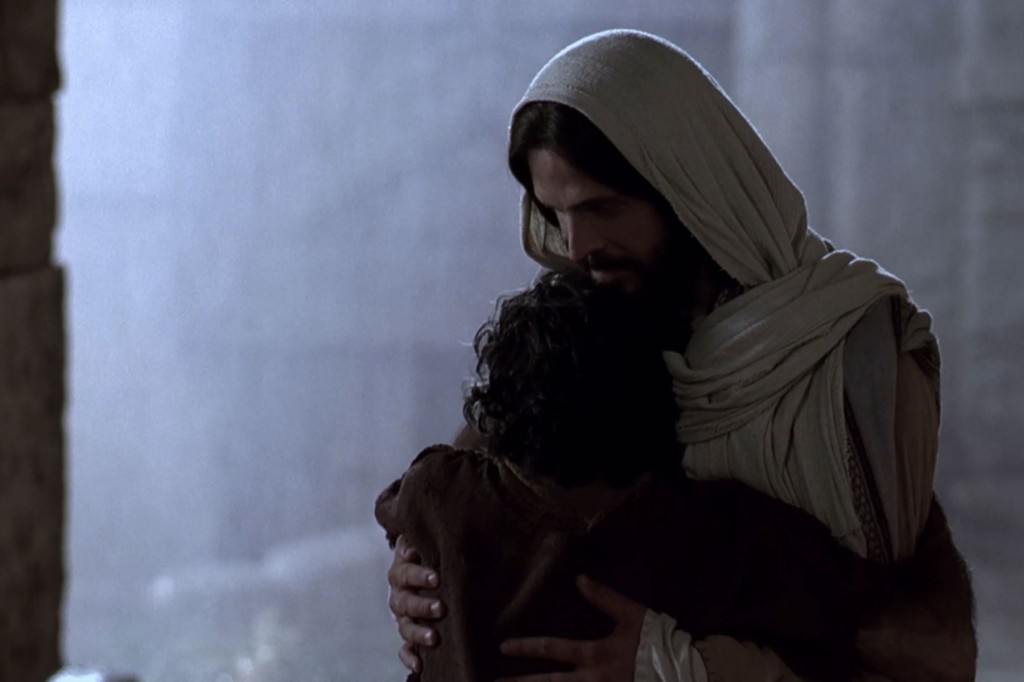
“And the King shall answer and say unto [YOU], Verily I say unto YOU, Inasmuch as YE have done it unto one of the least of these my brethren, YE have done it unto me.”
Do you see that this message is for you?
The Lord commanded us to care for the poor and needy, not just collectively but individually. This is your charge and obligation. And He will embrace and thank you for the way you kindly cared for His children.
Let’s get to work.



